A Magrittian-inspired park in the Tuscan capital, just below Piazzale Michelangelo, the largest panoramic terrace from which the whole of Florence is overlooked.
The Rose Garden (that’s the name of the Florentine park) has the look of a real garden, on two levels, complete with a glass-enclosed greenhouse and fountains. There is even one at the top that features a sort of bridge under a thick, flowering arbor.The mind suddenly flew to Impressionist-style depictions, where the green foliage and the colors of the blooms are accompanied by the roar of water on a sunny day in the middle of summer, although in its entirety the park has nothing to do withImpressionism. At most with surrealism, as we shall see. Roses obviously take center stage, as suggested by the very name of the garden: roses have been planted in the most varied colors and shades, from white to pale pink to the brightest pink, and of the most varied species (over 350) and sizes, but they are not the only flowers visible here; other types such as the plumbago, with its typical blue-violet hues, enrich with color this wonderful place visited every day by Florentines and tourists, both Italian and foreign. In fact, the park’s uniqueness attracts many people intrigued by pieces of contemporary art literally immersed in the greenery and among the roses. To fully enjoy the fragrant blooms of the roses, the optimal season to visit the Garden is spring, especially in April and May; if you choose to visit in summer, a sun umbrella is recommended...
Strolling through the park, sculptures made by Belgian artist Jean-Michel Folon (Uccle, 1934 - Principality of Monaco, 2005) can be seen scattered in several places, as mentioned, testifying to his deep connection with Florence. The city had celebrated Folon’s art with a major anthological exhibition set up at Forte Belvedere in 2005, and the relationship with the Tuscan capital was already strong, so much so that in the same year, when the artist died, his widow Paola Ghiringhelli donated ten bronze sculptures and two plaster casts to the City of Florence, following her husband’s wishes, to be destined for the Rose Garden and to make these works permanently visible to all. Thus, that very will of the artist to create, as had already happened in the successful Forte Belvedere exhibition, the panorama effect overlooking the city will continue forever. Located in one of the most panoramic points of Florence, from the park one can in fact see and distinguish perfectly Brunelleschi’s dome, a Florentine symbol par excellence.
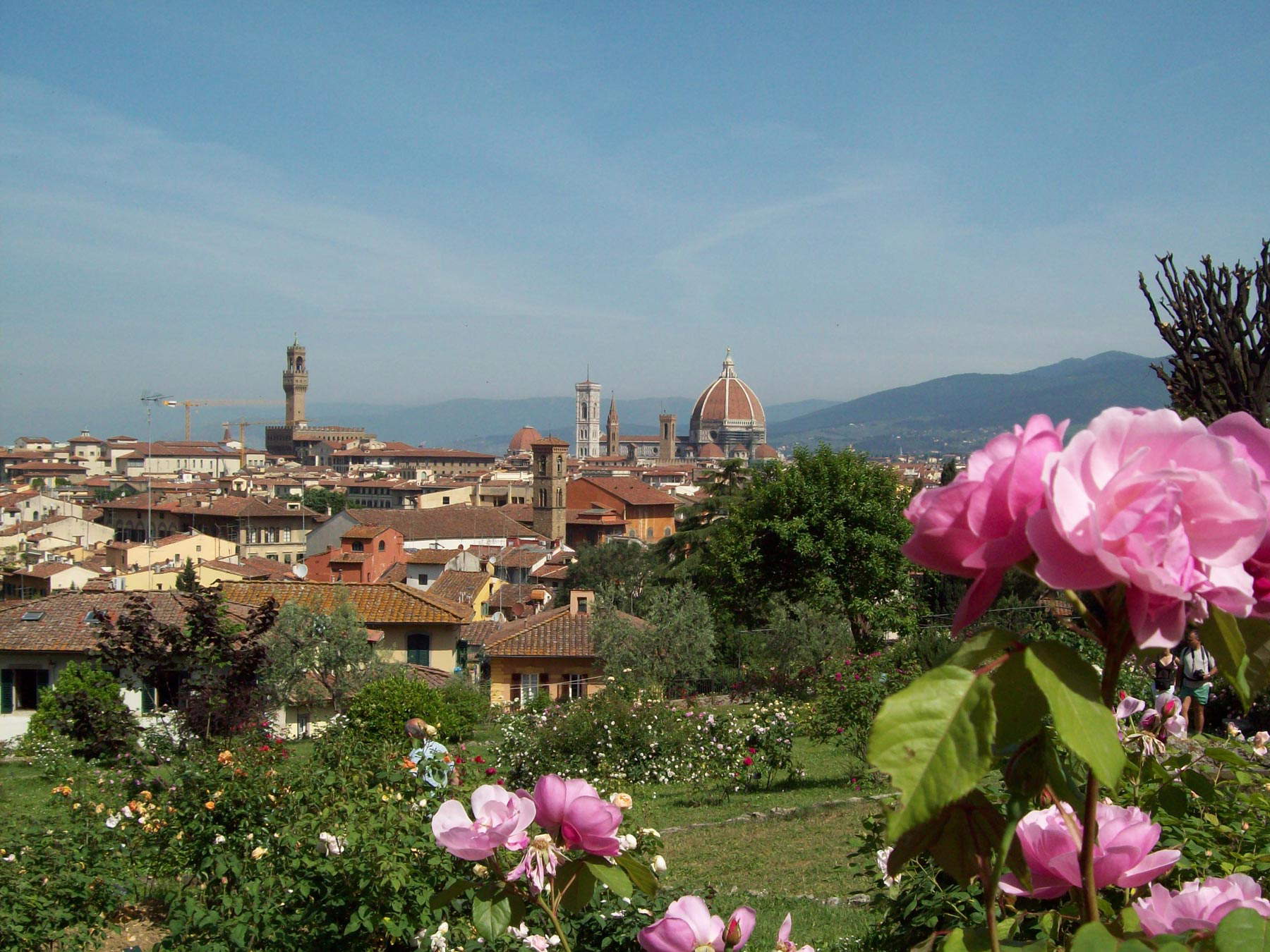 |
| The Rose Garden |
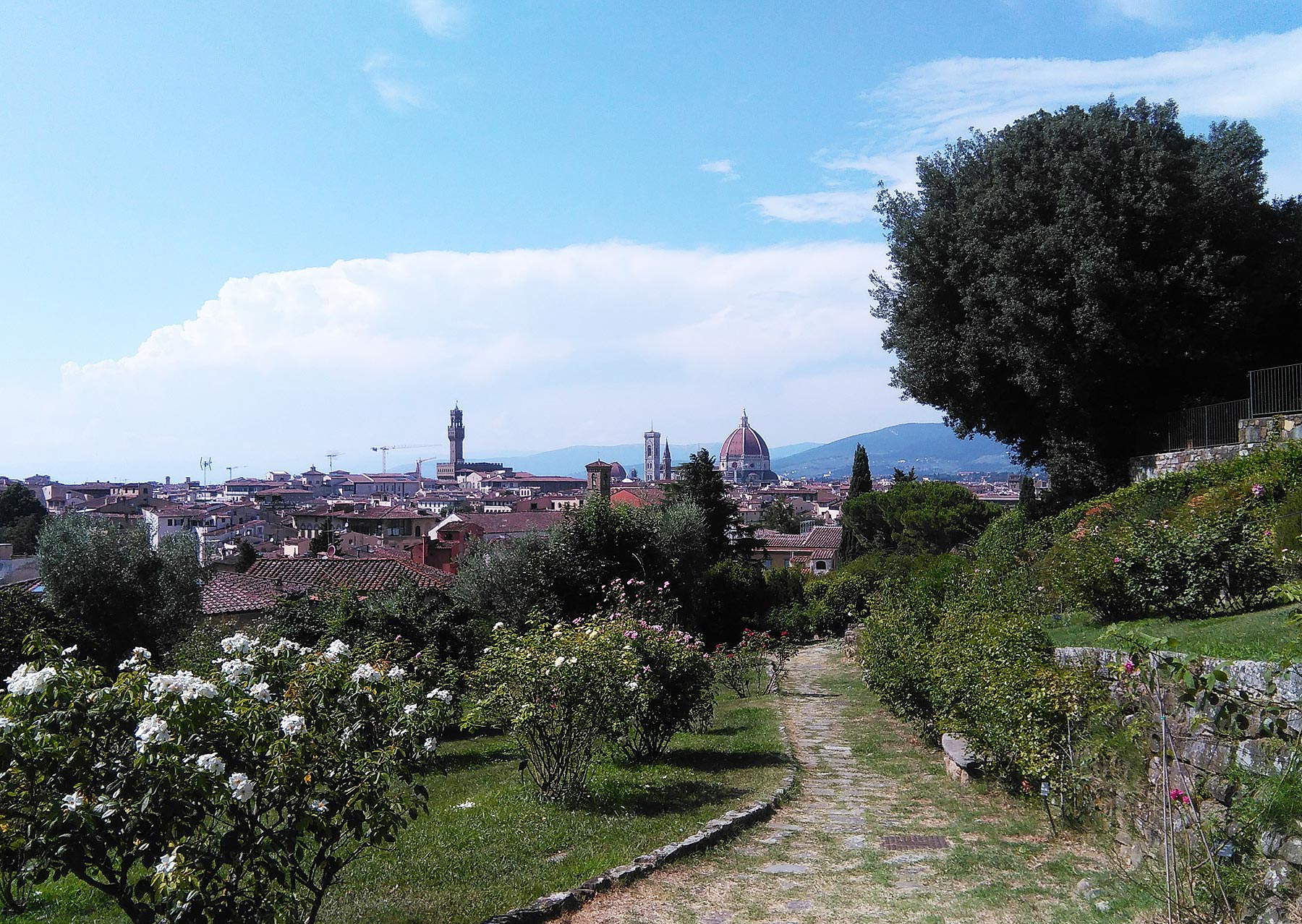 |
| The Rose Garden |
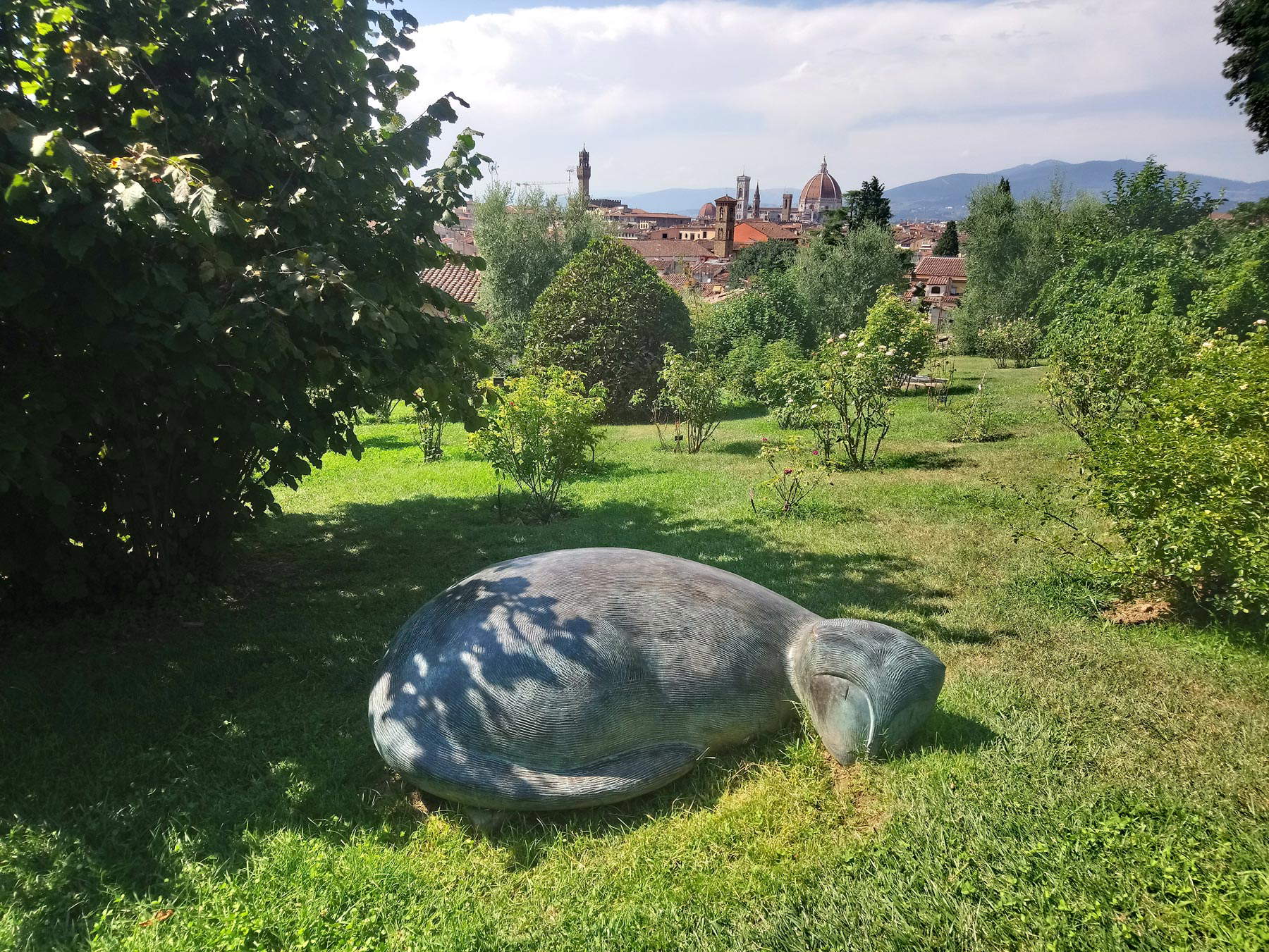 |
| The Rose Garden |
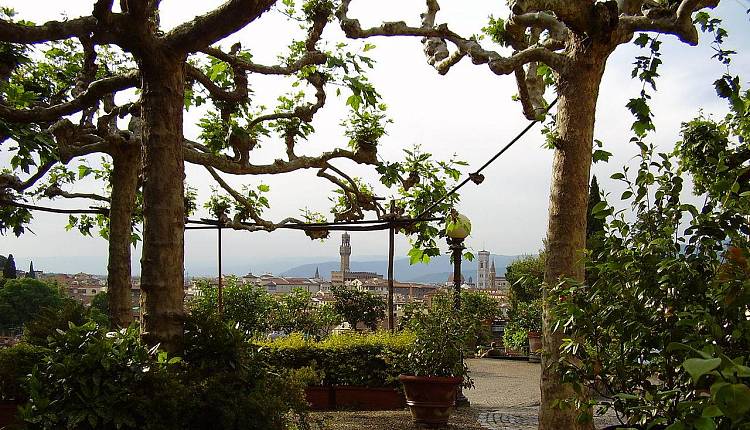 |
| The Rose Garden |
Illustrator, painter and sculptor, Jean-Michel Folon was born on March 1, 1934, in Uccle (Brussels). His father was a paper merchant and probably this sphere influenced him in his profession, especially in drawing. Undoubtedly both being born and educated in Belgium and moving at the age of twenty to Paris greatly influenced his production, for in Brussels he probably became acquainted with the art of René Magritte (Lessines, 1898 - Brussels, 1967), among the greatest artists of Surrealism in Belgium, while in Paris he came into contact with many members of the Surrealist group. His paintings, drawings and sculptures are distinctly Surrealist-inspired, especially identifying images and themes common to Magritte. The very sculptures in the Rose Garden hark back to the latter’s imagery, with themes such as travel, freedom, and recurring images such as the suitcase, theman with a hat.
In the 1960s he left for America: to various New York magazines he had sent his first drawings, and magazines such as Fortune or Atlantic Monthly continued to publish them; Time published four covers for him in the following years. He traveled often to Italy, where he had occasion to meet the writer Giorgio Soavi, for whom Folon illustrated his first book Le message with black and blue color drawings. Through his collaboration, the artist illustrated books by Franz Kafka and Ray Bradbury for Olivetti. Already in destiny was his connection with Italy.
In 1970 he participated in the XXXV Venice Biennale in the Belgian Pavilion and in the same year exhibited for the first time in Italy, in Milan. His exhibitions touched important cities of the world: in addition to Paris and Brussels, he exhibited in Milan, Chicago, Japan, London, Rotterdam, and Liege, and his drawings include illustrations to books by Apollinaire, Boris Vian, and Guy de Maupassant, as well as the complete works of Jacques Prévert. He also did set design, such as for operas by Giacomo Puccini or projected images for Igor Stravinsky’s chamber opera, History of the Soldier, and shot short films in New York, Los Angeles, and New Orleans.
For the reopening of the Teatro Olimpico in Vicenza he designed the poster and offered a series of one hundred posters to the city’s museum. He even illustrated in 1988 the Universal Declaration of Human Rights, published in six official UN languages. He returned to Italy two years later for an exhibition of his watercolors at the Museo Marino Marini in Florence. It was in 1993, however, that he devoted himself to sculpture, when he presented his works for the first time at La Pedrera in Barcelona. In the last years of his life, he made paintings, sculptures and decorated stained glass windows for the Chapel of the White Penitents in Saint Paul de Vence, and in 2005, the year of his death, a major retrospective was held in Florence, entitled Folon Firenze, in which more than three hundred of his works were presented between the Sala d’Armi of Palazzo Vecchio and Forte Belvedere. A great artist in the international sphere who knew how to combine the most diverse techniques in his production.
Recurrent themes in his poetics are travel and freedom, which are also found in the sculptures in the Rose Garden. To walk in the park is to lose oneself in Folon’s world: a world that inspires the imagination and frees the mind, inviting the visitor to travel on the wings of imagination and thought. Partir, the large suitcase that like a painting frames the view over the city, is the emblem of this, and one can sit on the bench next to theman in Je me souviens to enjoy the splendid view and to let one’s mind go free along with that of Folon’s man. The title Je me souviens itself hints at the journey through memory and time.
 |
| Jean Michel Folon, Partir (2002; bronze, 248 x 298 x 78 cm; Florence, Rose Garden) |
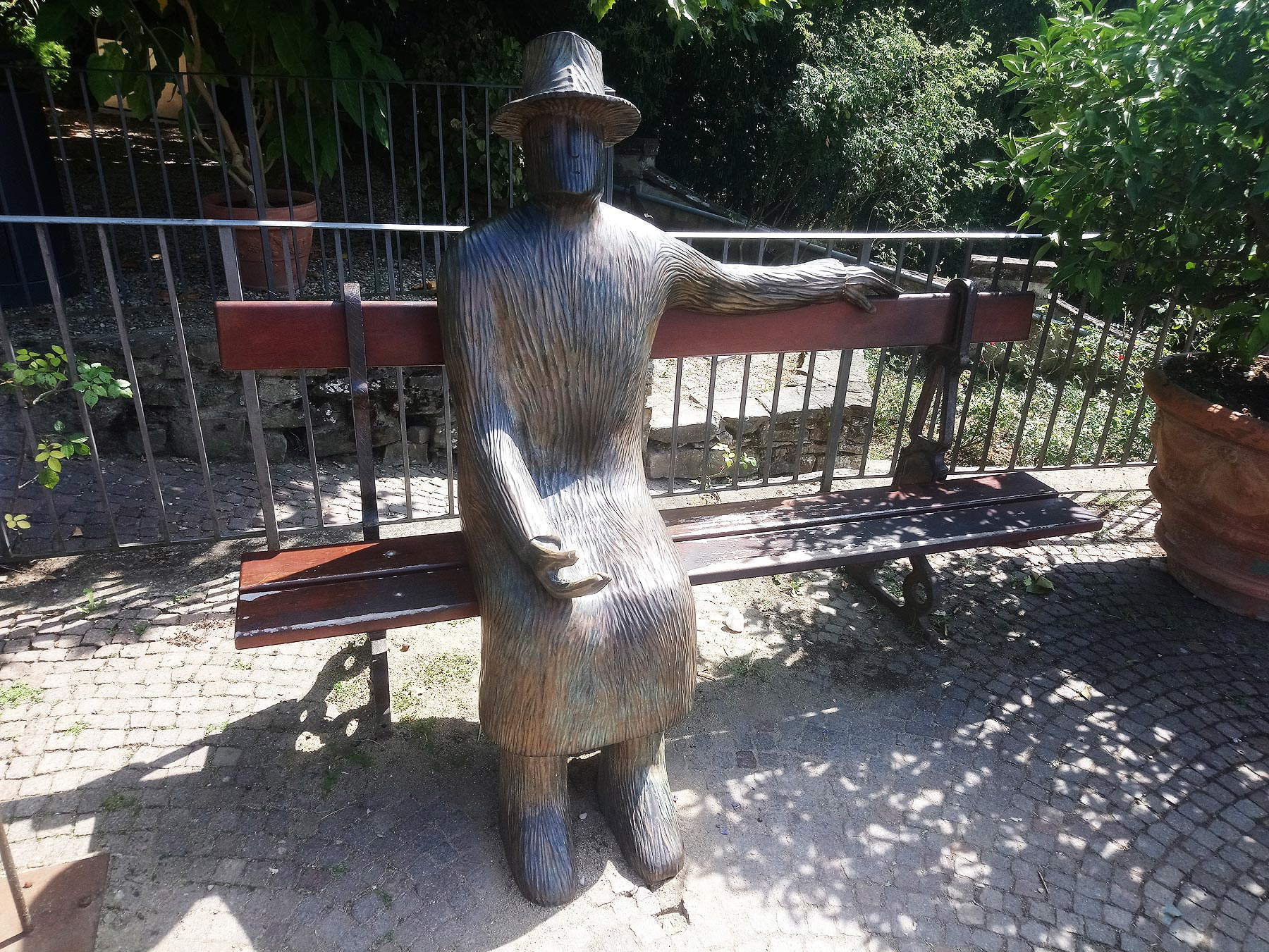 |
| Jean Michel Folon, Je me souviens (2003; bronze, 150 x 200 x 100 cm; Florence, Rose Garden) |
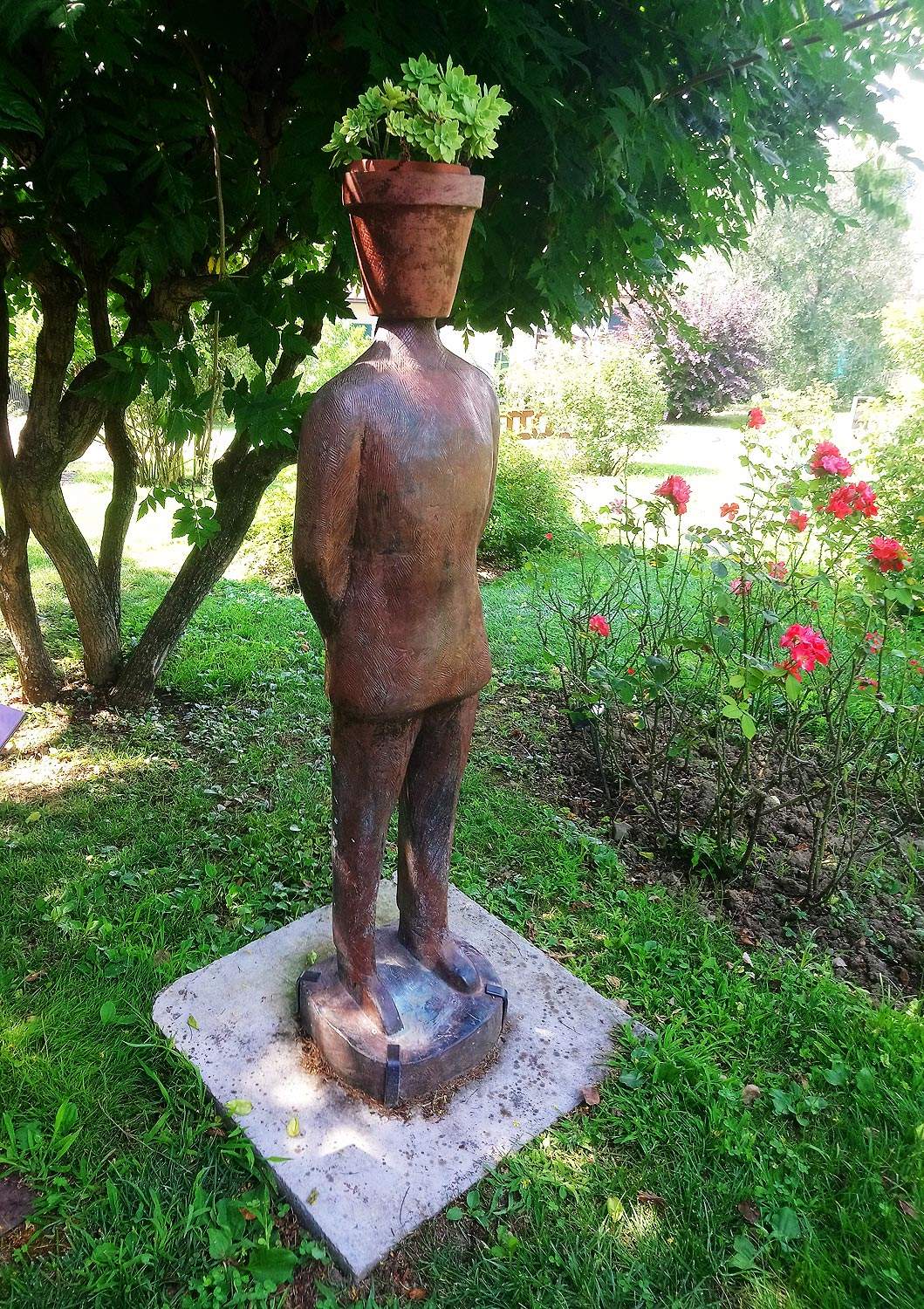 |
| Jean Michel Folon, 25ème Pensée (1999; bronze, 168 x 40 x 35 cm; Florence, Rose Garden) |
 |
| Jean Michel Folon, L’Envol (2002; bronze, 205 x 89 x 78 cm; Florence, Rose Garden) |
Two other human figures are represented here in sculpture: L’envol and 25ème Pensée; the former depicts a man wearing a hat who, among the roses, seems to be taking flight into the sky: his gaze is upward and his feet are now leaving the ground, only the toes still have contact with the earth; in the latter, a man’s face is represented by a vase with a plant. It is an image that harks back to Magritte’s unusual faces of men, as in The Son of Man where the face is concealed by an apple or in The Man with the Bowler Hat, where covering the face is a dove with wings outstretched in flight. Both of Folon’s sculptures also recall one of the typical features of Magritte’s figures, the man with a hat, creating a trait d ’union between the two. The two plaster models kept inside the greenhouse, Pluie and Quelqu’un, also depict human figures.
Instead, the tall, slender figure stretching upward, almost in flight, entitled Oiseau, the seated figure Chat - oiseau and Chat, the cat asleep on the grass, are animals . And finally, the figures from whose mouths fountain water gushes, Vivre and Mediterranée.
Birds are the animals that recur most often in Folon’s images and forms, for they symbolize flight, freedom, peace, but also lightness, the opposition between heaven and earth, and travel. They are symbolic of a man who dreams of traveling, of escaping to find freedom.
On the other hand, the manwith a hat, which is also very recurring, represents the universal man, whom no one can identify; he is often depicted alone, sitting in front of the sea or in dialogue with a work of art (as in the case of Je me souviens) or standing with his gaze turned toward the sky. He represents the whole of humanity. Folon’s figures are also immersed in the silence that becomes an implicit and inherent element of his compositions.
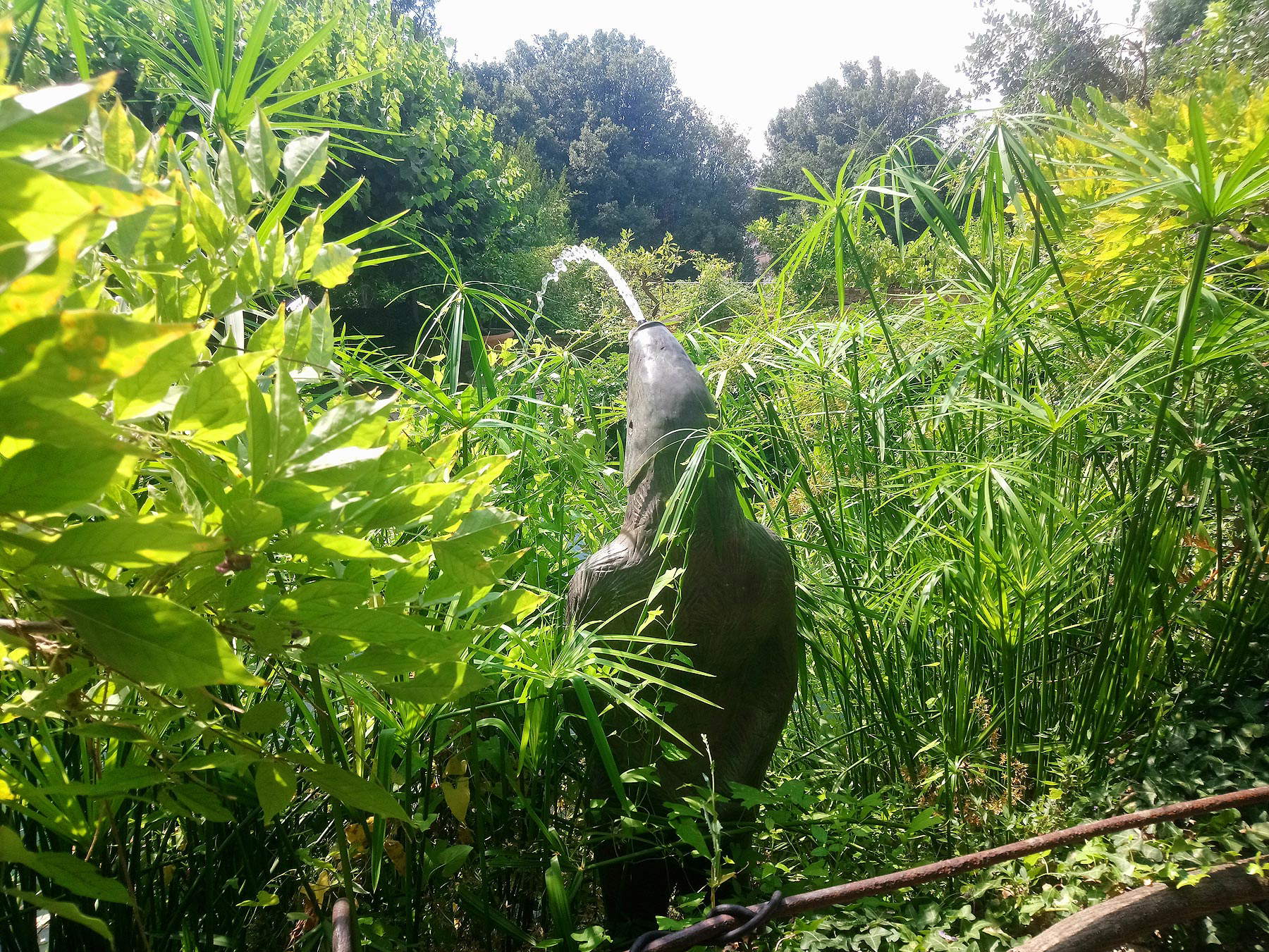 |
| Jean Michel Folon, Mediterranée (2001; bronze, 167 x 57 cm; Florence, Rose Garden) |
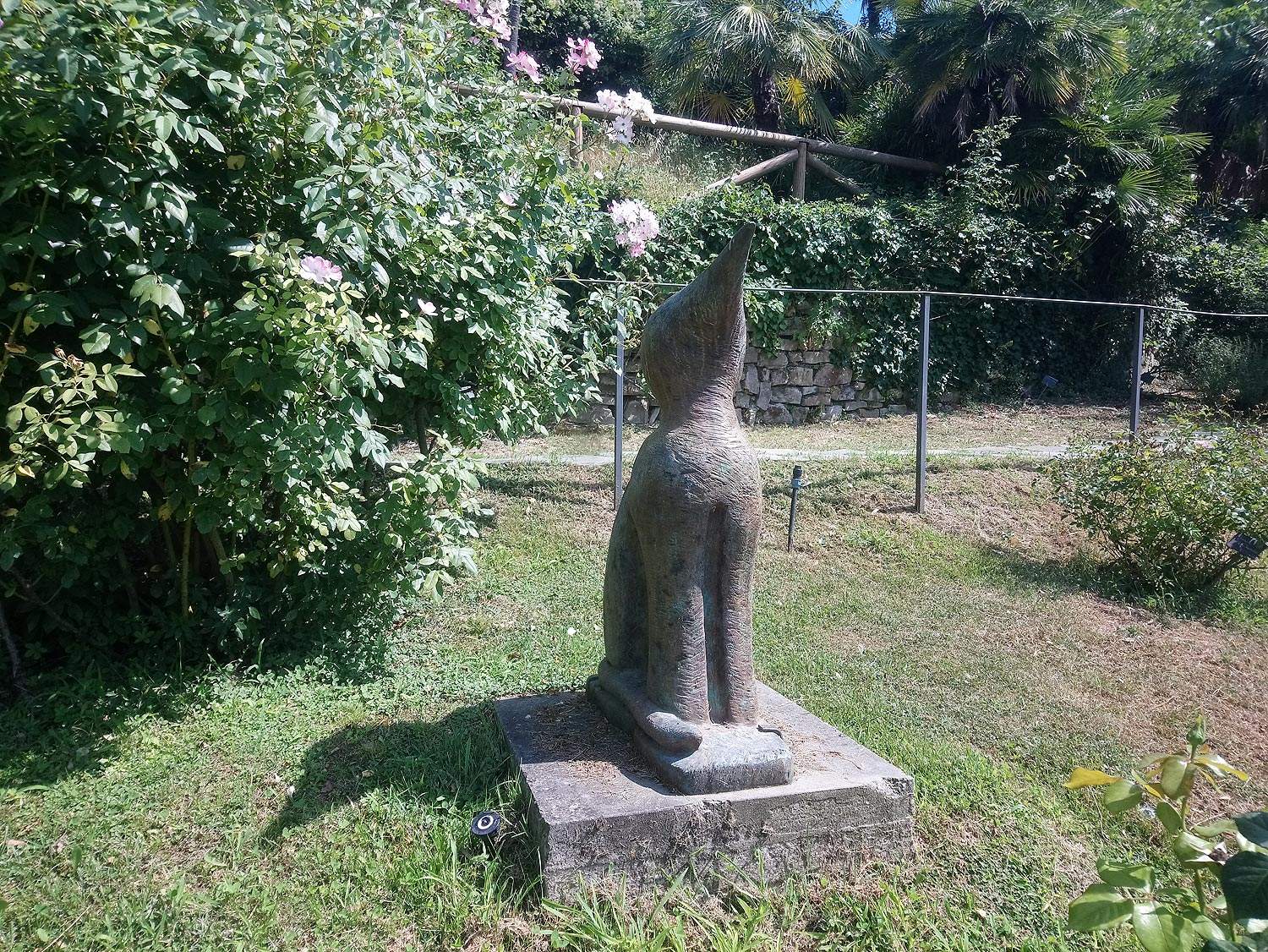 |
| Jean Michel Folon, Chat-oiseau (1994; bronze; Florence, Giardino delle Rose) |
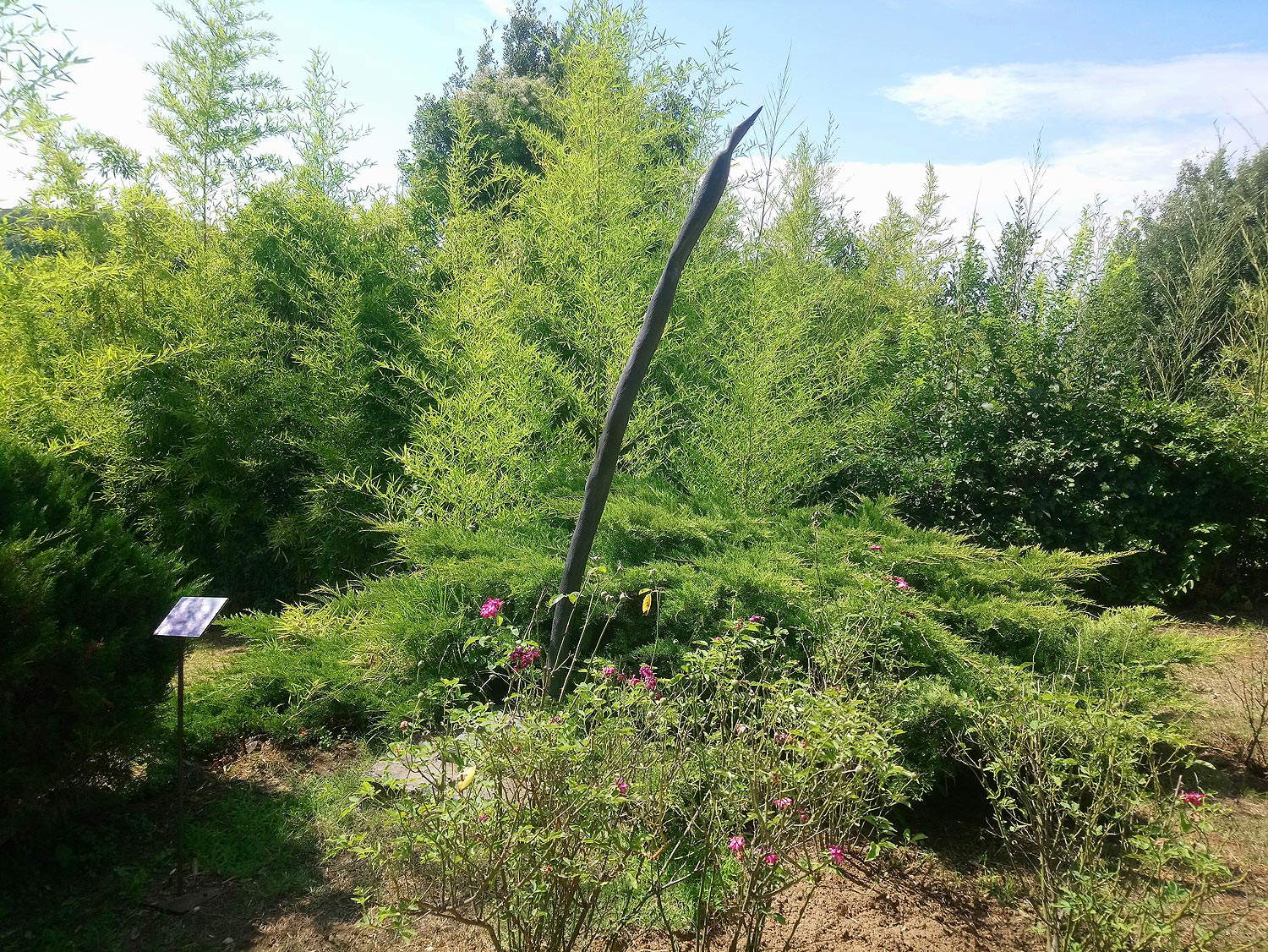 |
| Jean Michel Folon, Un oiseau (1993; bronze; Florence, Giardino delle Rose) |
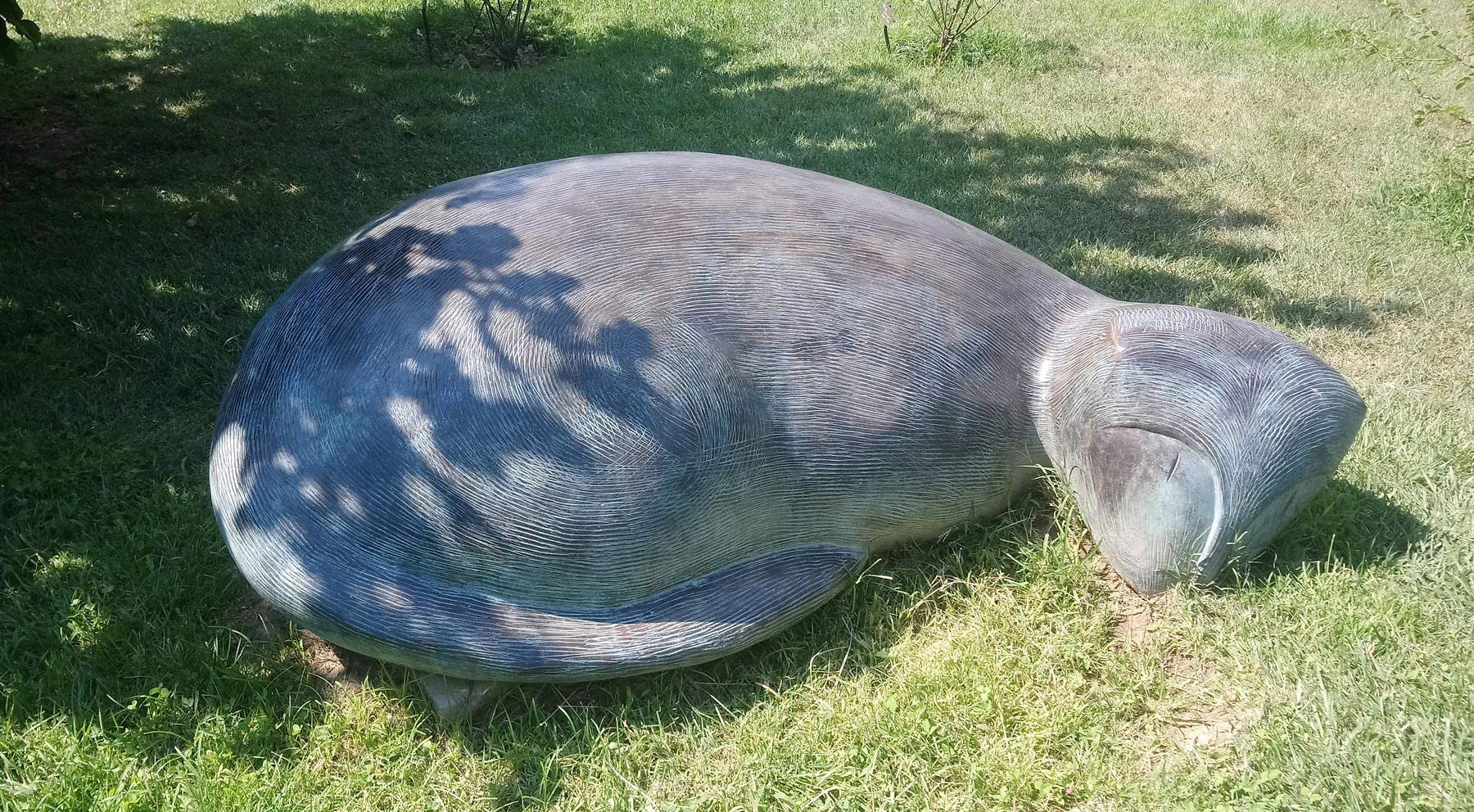 |
| Jean Michel Folon, Chat (1996; bronze; Florence, Rose Garden) |
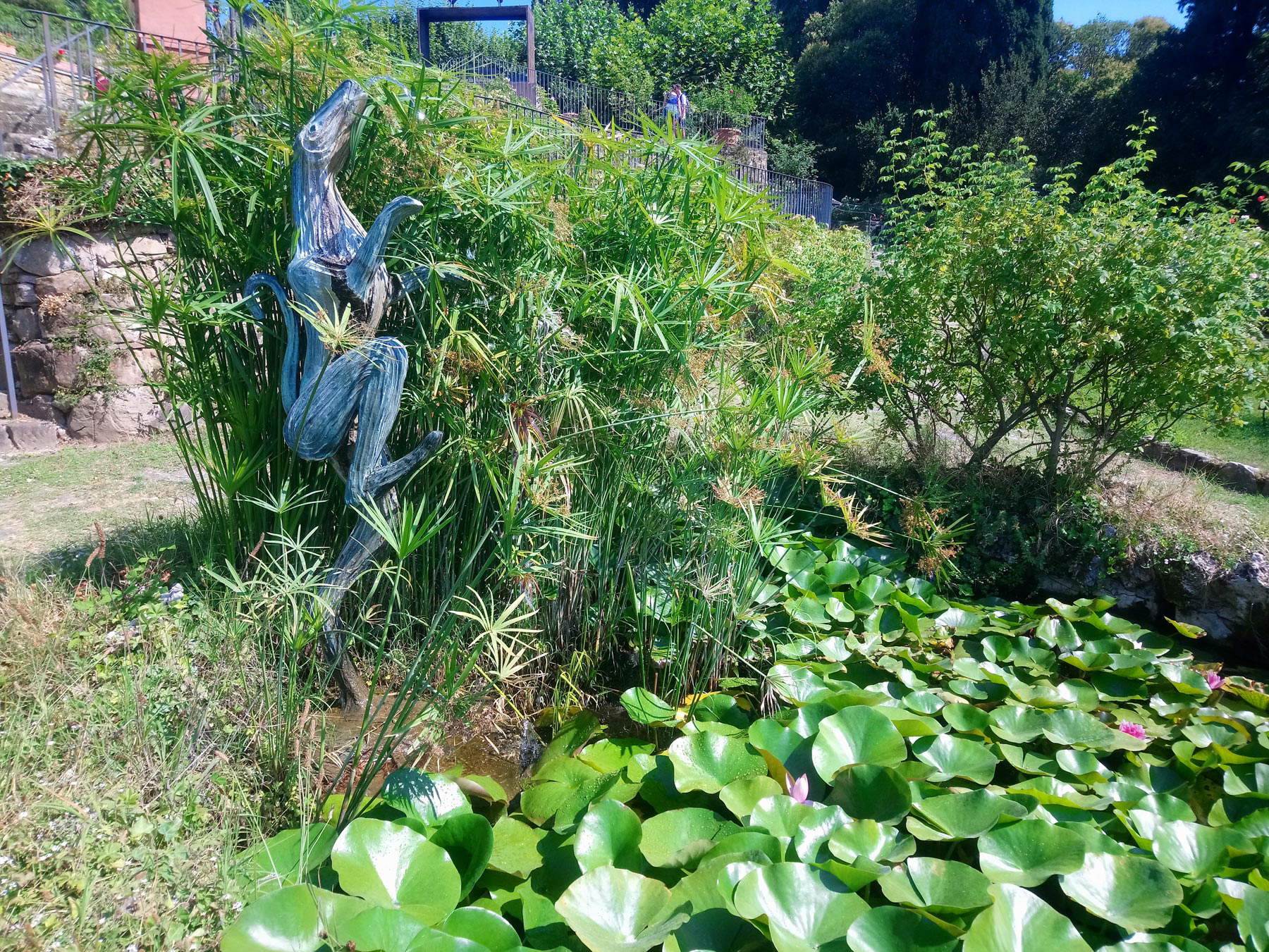 |
| Jean Michel Folon, Vivre (bronze; Florence, Rose Garden) |
The focus is often on the link between thought and distant horizons, evoking travel and freedom and making tangible the feeling of escape and the grandeur of the infinite. A journey that is intended to be not only physical, but above all inner and spiritual to one’s memories and dreams. And an element that brings travel and freedom together is the suitcase, among the objects most represented in Folon. With great suggestion, it often encloses as in a painting horizons that are lost in infinity. Each of the artist’s works is an invitation to individual freedom, freedom of thought and physical freedom.
Through his art, Folon makes explicit ethical themes: his works are rich in poetry. He said that “if man spent more time admiring the beauty of the world, of a work of art, he would never come to consecrate war and violence, often gratuitous.” He believed inequality and universality, which is why he introduced universal traits into his works that could be understood by all: an example of this is the man in the hat, as seen above.
Themes and images that altogether intend to convey with simplicity principles fundamental to humanity and issues dear to all.
In addition to Folon’s works, the Rose Garden hosts a Japanese garden that the twin city of Kyoto wanted to leave to Florence as a sign of friendship and peace, to reiterate once again the egalitarian, ethical and universal dimension that pervades the entire park.
A place of dream and suggestion dedicated to an artist linked to Italy and Florence, who left here forever testimony of his great creativity and his main values, first of all freedom.
Warning: the translation into English of the original Italian article was created using automatic tools. We undertake to review all articles, but we do not guarantee the total absence of inaccuracies in the translation due to the program. You can find the original by clicking on the ITA button. If you find any mistake,please contact us.